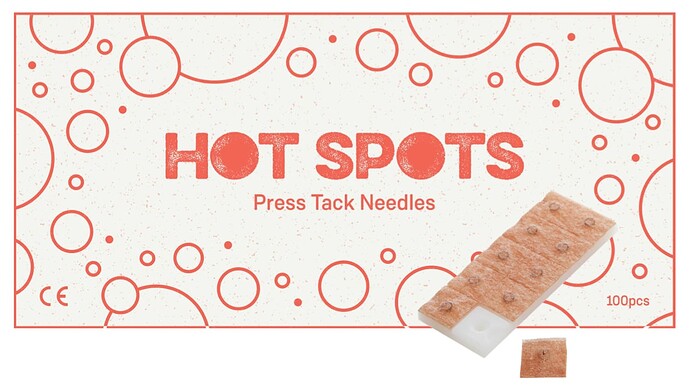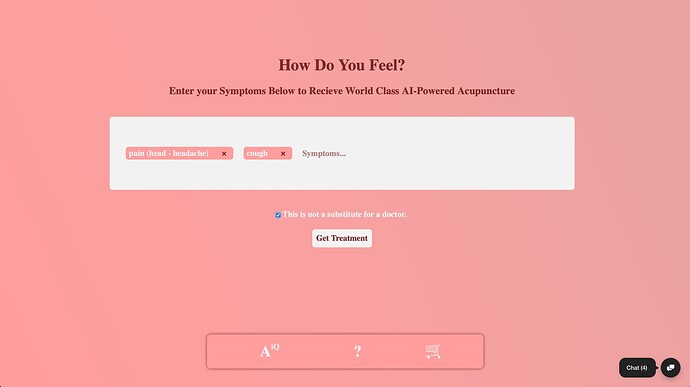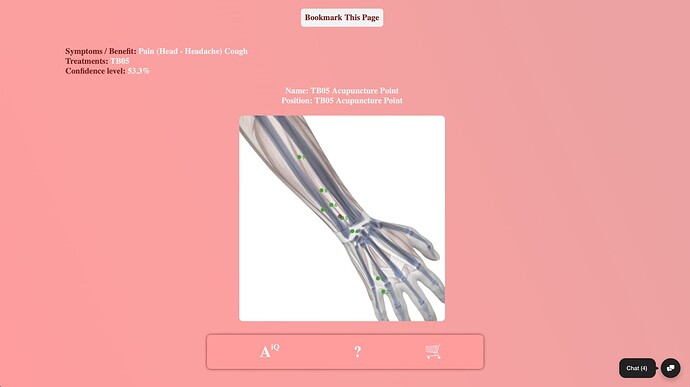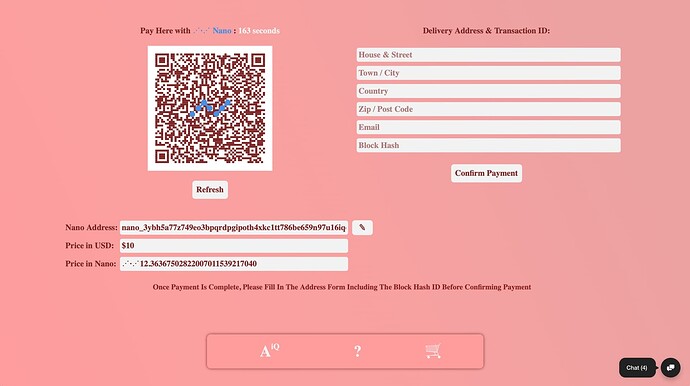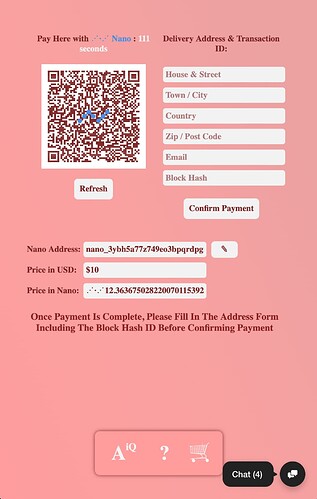Name of Project:
AcuiQ
Proposal in one sentence:
We’re building a web3 version of AcuWiki.com, which will be an automated recommendation engine for acupuncture points, herbal treatments and other TCM protocols:
- Current MVP webapp maps symptoms to personalized acupuncture treatments: http://178.62.27.154/ (screenshots below).
- Funding required to:
- Build out and debug MVP.
- Acquire 000’s more anonymous case studies.
- Upgrade model from pattern-matching to ML.
- Expand beyond acupuncture to herbs and other TCM protocols.
- Integrate payment via $ETH and $XRD on the Radix network.
- Transition to an NFT-gated DAO on Radix.
- Establish dividends for users.
- Host and serve the webapp on the Radix network.
Description of the project and what problem is it solving:
INTRODUCTION
“There is no Merck manual for acupuncture. You are evaluated on an individual basis, based on what symptoms you present, and the knowledge of the acupuncturist.” --Dr. Carl J. Sarnacki M.D.
Despite its long history and grass-roots pedigree, modern acupuncture is expensive, inconvenient and inscrutable.
Utilizing thousands of anonymous case studies and feedback from the community, AcuiQ will map anonymous patient symptoms to personalized self-acupuncture treatments that can be performed at home using safe ~1.5mm ‘press needles’ such as these. We have also developed our own brand of press needles called ‘Hot Spots’:
As well as being expensive, during the Covid pandemic, acupuncture became impossible. However, self-applied press needles are easy and safe to use at home, and frequently dispensed by acupuncturists for that purpose. Press needles facilitate acupuncture for $15/month in a time-conscious, efficient way.
Our machine learning model will also ensure that treatments tend towards a global standard, rather than the biases of individual practitioners.
Finally, AcuiQ will be structured as a native DAO on the Radix network and distribute daily $XRD dividends to users in proportion to their contributions.
VISION
Worldwide, $15/month acupuncture as common as aspirin.
TECH
The current MVP uses Levenshtein pattern matching to compute the similarity ratio between an input list of symptoms in text format (e.g. [”cough”,”headache”]) and a list of ~14,000 anonymous case studies that detail the patient’s symptoms and which acupuncture points and / or herbs were used. The closest match determines the recommended treatment with an accompanying confidence rating based on the similarity ratio.
Future research will focus on sequence-to-sequence (Seq2Seq) machine learning and training a model to extrapolate from the case studies to novel presentations. A distant hope is that the model will eventually be able to discern a hidden logic within the acupuncture and herbal remedy frameworks that will form the basis of a global treatment authority.
MARKET OPPORTUNITY
The alternative medicine market will reach ~$300bn by 2027. There are ~175 acupuncture practices listed in only the NW1 area of London, treating 5-50 patients per day. That’s a local economy of at least $12.5m / year serving ~40k people with very high friction and overheads. Multiplied across every borough of every city in the world, there is huge potential for disintermediation.
Self-acupuncture is popular in Japan through companies such as Seirin. It has the potential to be marketed worldwide to all strata of society. In the developing world such as China and India, acupuncture is well accepted but could benefit from a dominant brand. In the developed world, the zeitgeist is to reduce healthcare costs and treat oneself more holistically, which further favors the disintermediation of practitioners.
COMMERCIAL MODEL
The commercial model has four stages:
- Sales: press needles (~$10), herbs (~$100), massage chairs (~$5000+), etc.
- Partnerships with TCM practices: case studies in exchange for model access.
- Group treatment sessions: permanent / popup sessions at local outlets where users download the app and are supervised to treat themselves.
- Research licencing.
GROWTH STRATEGY
- Uber: Open the market to a huge, previously unserved demographic. As taxis can now replace car ownership, so facilitating self-acupuncture can make it as common as aspirin.
- Obsessively reduce friction: single codebase, platform-agnostic, no login, no personal data, frictionless UX, low cost products, daily dividends, decentralized company structure.
- Virality: ability to share treatments easily.
- Leverage existing users of AcuWiki.com to drive traffic.
- Source community content and distribute widely to drive additional traffic.
COMPETITION
AcuiQ has the advantages of worldwide, invested customers; low overheads; scalability, and limited regulatory requirements.
Current alternatives are the myriad high-street TCM shops that serve roughly 5-50 patients per day. They epitomize the practitioner-patient model and compete for business on platforms such as Treatwell.
Online, there are sites such as YinYangHouse.com, Acupuncture.com and Acufinder.com. They host a wealth of information and the forums are well populated, but their purpose is to drive patient referrals so they are not aggressively expansionist.
One could imagine a paraphernalia company such as Seirin adding a diagnosis service but it would be difficult to do without alienating their existing customer base of practitioners.
A company like Acugraph would have the data to compete but would be unlikely to effectively opensource that data in pursuit of sales and risk alienating their practitioner clients.
Most acupuncture apps are for practitioners, such as Visual Acupuncture 3D. The rest are very basic, usually paid, treatment services but without proper diagnoses or stores, such as AcuApp.
Finally, a data startup would be the most likely future competitor. At $210bn by 2026, the market is big enough to support many companies, but it would be a race to establish a dominant brand.
DISCUSSION
Assumptions
AcuiQ assumes that treatment protocols can be learned by ML models and that needle insertion—being typically shallow—is adequately replicated with self-applied press needles.
AcuiQ is agnostic on the efficacy and/or placebo effects of acupuncture. It assumes only that the market price of treatment reflects real utility and seeks to deliver that utility in a more efficient way.
AcuiQ will take published cases at face value and will eventually be able to identify outlier results, creating a de-facto model of industry best practice. This may serve as a benchmark and eventual governing authority for the industry.
To compete long-term, AcuiQ must be community-owned to align user incentives with feedback to the ML model. Traditional company structures would introduce unacceptable levels of friction to the administration of such an arrangement. A DAO structure may provide an ideal solution. In addition, crypto offers the prospect of frequent - even daily - dividend payments to motivate previously unobtainable levels of customer engagement.
Why Radix?
With its X’ian release in 2023, Radix will be a fully sharded network capable of true cross-shard atomic composability. Having 2^256 shards means that it also scales linearly with the number of validators. Written in Rust, the Radix Engine employs finite state machines that eliminate the majority of edge-case considerations inherent in Solidity. This makes it possible to replicate Uniswap in only 155 lines of code or build dApps like chess that are not feasible on Ethereum. The video below takes a deeper dive into Radix’s developer experience:
https://www.youtube.com/watch?v=ellTKksocJE
Grant Deliverables:
- Build out and debug MVP.
- Acquire 000’s more anonymous case studies.
- Upgrade model from pattern-matching to ML.
- Expand beyond acupuncture to herbs and other TCM protocols.
- Integrate payment via $ETH and $XRD on the Radix network.
- Transition to an NFT-gated DAO on Radix.
- Establish dividends for users.
- Host and serve the webapp on the Radix network.
Squad
Andrew Ridge (Founder): https://www.linkedin.com/in/apridge
15 years in creative production & management, startups and web3.
Dr Enqin Zhang (TCM Advisor): https://www.linkedin.com/in/dr-enqin-zhang-consultant-chinese-medicine-1a1ab227/
Professor Zhang has 49 years’ experience. He holds his professorship from 6 Chinese and international universities, is President of the UK Academy of Chinese Medicine, Vice President and General Secretary of the Association of Chinese Medicine Practitioners, a senior member of the Royal Society of Medicine and author of 16 books. He will help train the model.
Solly Welch (Volunteer Flask / Solidity Developer):
https://sollywelch.com/

